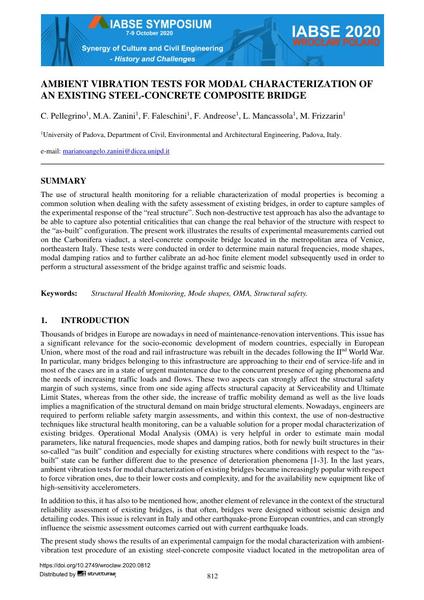Ambient Vibration Tests for Modal Characterization of an Existing Steel-Concrete Composite Bridge

|
|
|||||||||||
Détails bibliographiques
| Auteur(s): |
C. Pellegrino
M. A. Zanini F. Faleschini F. Andreose L. Mancassola M. Frizzarin |
||||
|---|---|---|---|---|---|
| Médium: | papier de conférence | ||||
| Langue(s): | anglais | ||||
| Conférence: | IABSE Symposium: Synergy of Culture and Civil Engineering – History and Challenges, Wrocław, Poland, 7-9 October 2020 | ||||
| Publié dans: | IABSE Symposium Wroclaw 2020 | ||||
|
|||||
| Page(s): | 812-819 | ||||
| Nombre total de pages (du PDF): | 8 | ||||
| Année: | 2020 | ||||
| DOI: | 10.2749/wroclaw.2020.0812 | ||||
| Abstrait: |
The use of structural health monitoring for a reliable characterization of modal properties is becoming a common solution when dealing with the safety assessment of existing bridges, in order to capture samples of the experimental response of the “real structure”. Such non-destructive test approach has also the advantage to be able to capture also potential criticalities that can change the real behavior of the structure with respect to the “as-built” configuration. The present work illustrates the results of experimental measurements carried out on the Carbonifera viaduct, a steel-concrete composite bridge located in the metropolitan area of Venice, northeastern Italy. These tests were conducted in order to determine main natural frequencies, mode shapes, modal damping ratios and to further calibrate an ad-hoc finite element model subsequently used in order to perform a structural assessment of the bridge against traffic and seismic loads. |
||||
